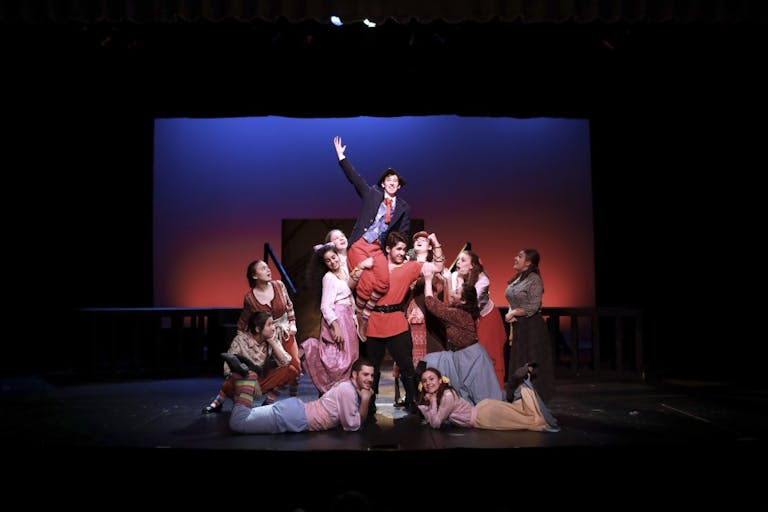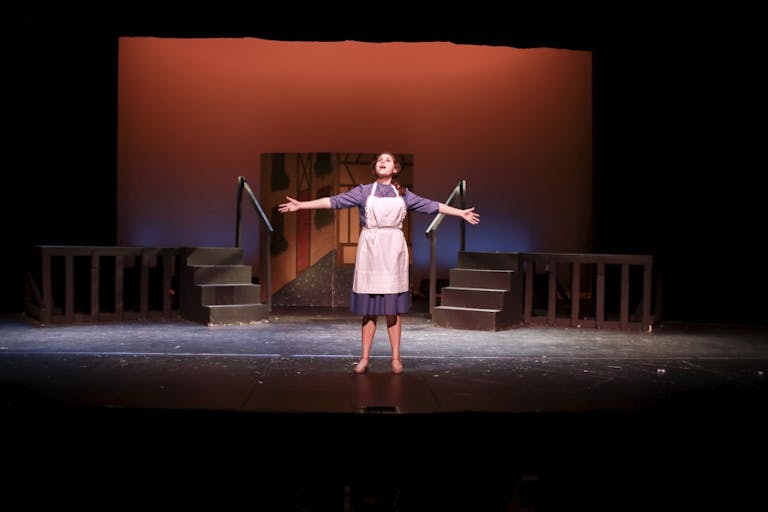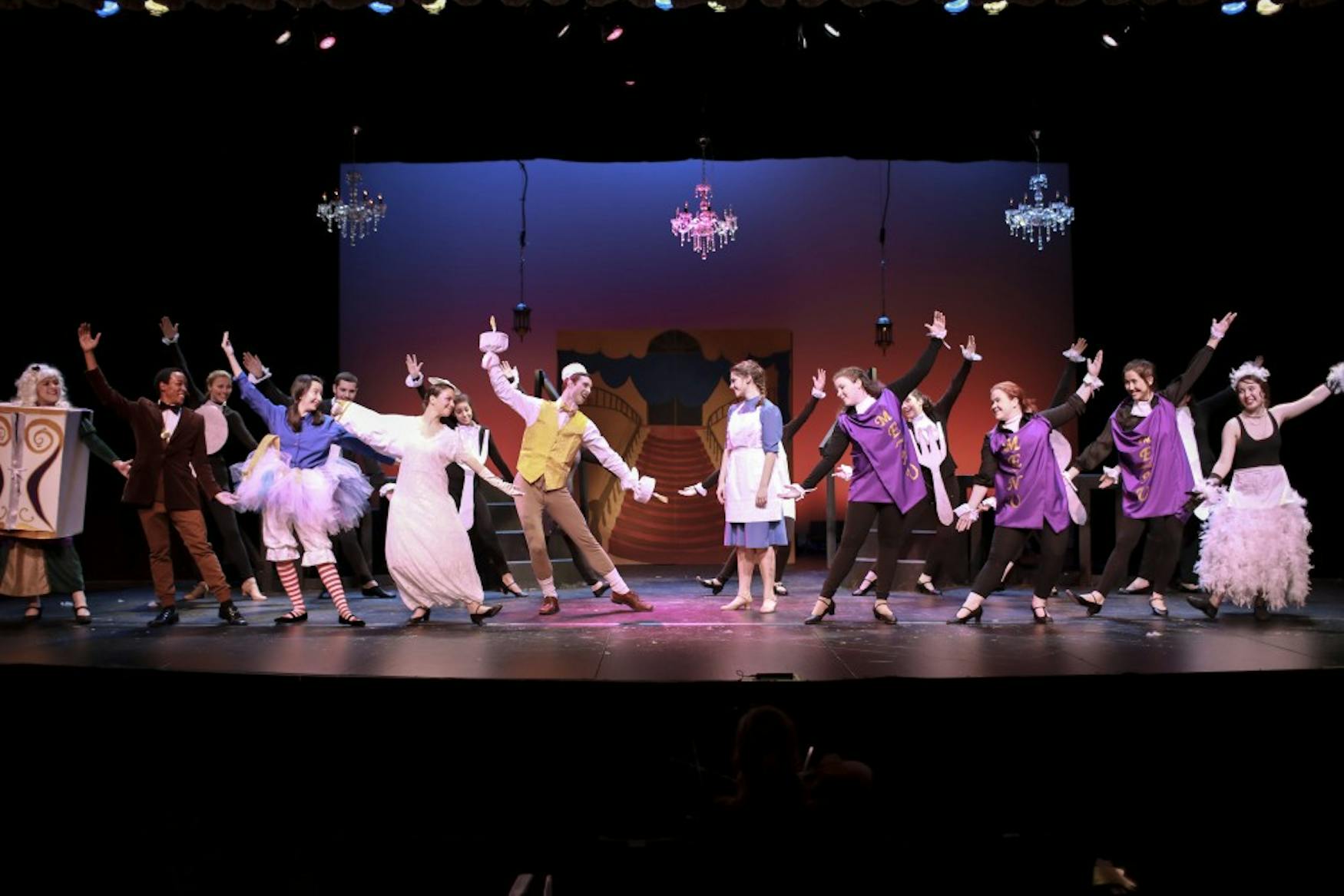The UTC presents a Disney hairy tale
This weekend, Brandeis’ Undergraduate Theater Collective presented the classic Disney musical “Beauty and the Beast,” directed by Maia Cataldo ’20. The show was a faithful production of the Alan Menken musical adapted from the 1991 animated film of the same name. The fantasy romance is based on the French fairy tale by Jeanne-Marie LePrince de Beaumont and tells the story of Belle, a girl who is ostracized for her academic inclinations. She runs off into the woods to look for her father, who is imprisoned in a cursed castle. All of the castle’s inhabitants have been turned into household objects, unable to assume their human forms until their master, who has been transformed into a beast, finds true love.
If I were to summarize the production in a word, it would be “unbalanced.” Despite the fact that the show was a fun time for all, there were uneven moments that were noticeably jarring. The actors performed dances wonderfully choreographed by Liora Lilienthal ’20 and Sophie Brill Weitz ’21, but with very light instrumentals that didn’t serve as a hearty backbone for the scene. The performers danced their hearts out, but the music was disturbed by the cacophonic stomping of at least 10 people onstage. Actors had either stunning singing voices or engaging stage presences — rarely both.
One standout who accomplished both in stride was Mendel Weintraub ’21, who played Lumiere, the passionate candlestick. Weintraub’s command of almost every scene was met with laughter and applause. Another was Ben Greene ’21 as Lefou. His animated antics and physical performance added a cartoonish humor that worked well within the show. His fairly good rendition of “Gaston,” as well as his chemistry with Liam Gladding ’21 as Gaston, was a definite bonus.

Despite the musical being called “Beauty and the Beast,” I was not as interested in either titular character as I was in the supporting cast. Both Kait Polgar ’21 and Benjamin Steinberg ’18, who played the respective roles, sang tremendously, but did not command the stage like their fellow cast members. Their performances often felt wooden and dispassionate, though they usually improved when they could slightly lean on the supporting cast members. For example, Polgar’s duet with her “crazy” onstage mother, Kat Lawrence ’20, was very good — with ample support from Lawrence, the two showed great chemistry. Then there was Gladding as Gaston, which was purely fantastic casting. He could not have fit the role more perfectly; he had a booming voice and strength to spare, easily lifting up other actors to add dimension to the choreography and expand Greene’s range within set pieces. While Gladding excelled through dialogue, his singing fell a bit flat. Oddly enough, the household objects were more animated on stage than the human characters. Kudos to Weintraub’s furniture friends Anderson Stinson III ’21, Jess Cocomazi ’21, Julia Vinyard ’21, Vanessa Mark ’21 and Sophia Massidda ’20 as Cogsworth, Mrs. Potts, Chip, Babette and Madame de la Grande Bouche, respectively. However, I understand that this production was open-cast, meaning their performers did not have to be directly involved with the Theater Arts department or the UTC. It’s admirable to produce a show like that, so I won’t hold the cast to any absurd standard. All of these performances were orchestrated under the influence of Cataldo, who did a pretty good job recreating the animated film as director. A faithful recreation is always hard to pull off, but creative storytelling is required for your production to maintain its individuality. Cataldo used the space well and arranged a simple yet effective set with designer Aislyn Fair ’19. The costumes were also surprisingly faithful to the film and were appropriate to the story’s setting, thanks to costume designer Gabriela Stahl ’21. However, Cataldo could have made some scenes flow more naturally; the ending in particular was quite underwhelming. Was Gaston’s plummet from the castle roof really prompted by his surprise at seeing Belle? This blink-and-you’ll-miss-it moment leaves you no time to process how ridiculous it actually was; I felt this part was handled quite poorly. What proceeded was an awkward transformation of the Beast back into his human form. Rather than having the audience watch Steinberg loudly remove his prosthetics with his back turned, there could have been a more theatrical transition — a flashing of lights or a mob, maybe the ensemble cast, ripping them off of him. Instead, the audience stared in a looming silence barely interrupted by faint instrumental music.

I do have to note that there were several technical difficulties that may have altered my experience. At some points, actors’ mics were too soft; at others, too loud.
I tend not to focus on them, but the technical difficulties were prevalent. These things are inevitable, so I don’t hold them against the cast and crew. Overall, I would say “Beauty and the Beast” was a fun time. The cast clearly enjoyed putting on the production, and audiences were not far behind with their support.
—Editor’s note: Mendel Weintraub ’21 is a staff writer for the Justice.




Please note All comments are eligible for publication in The Justice.